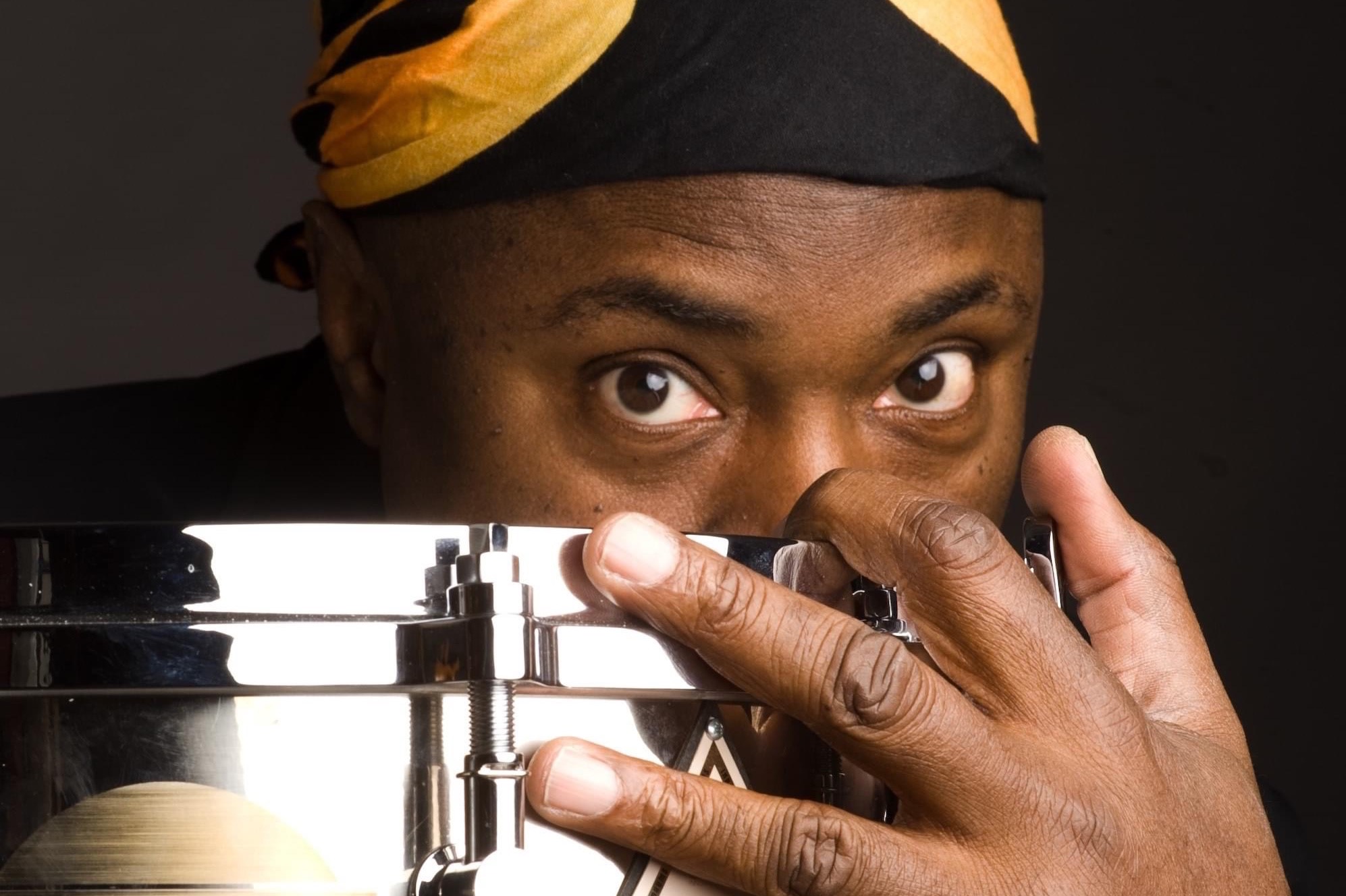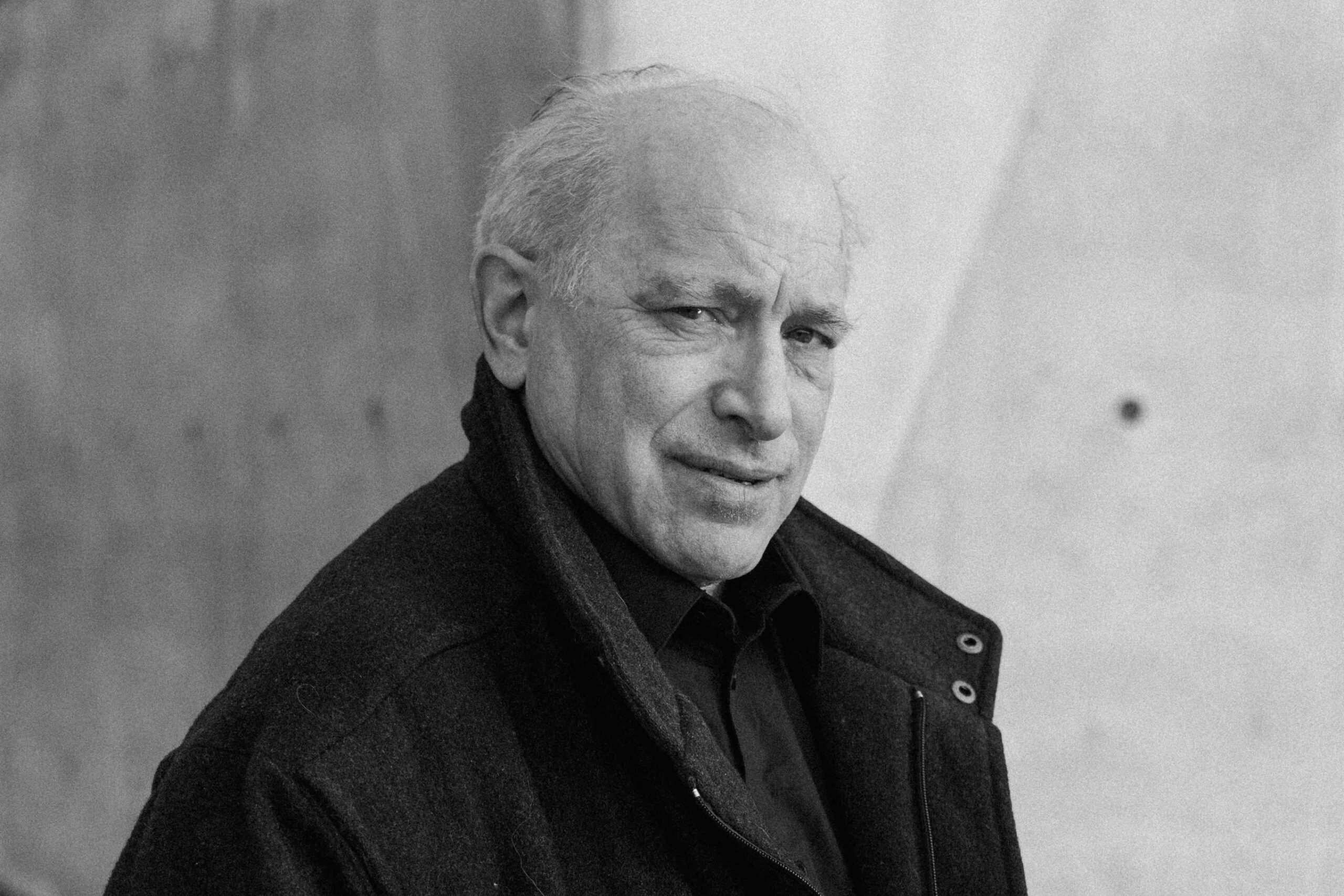Translating the Language: A Conversation with Lenny White (Part One)
This site primarily emphasizes music that pushes – or even transcends – preexisting concepts of how certain music “should sound.” Arguably, jazz itself is an amalgamated confluence of diverse stylistic perspectives. One of the best examples of such music can be found in Miles Davis’ Bitches Brew (Columbia, 1969). The record’s boldness made it neither transfixed on jazz works of the past nor tied solely to rock. Many consider it a jazz fusion masterpiece because of its borrowing from both sources. But, perhaps exposing the misconceptions remaining around the music, the album may not be “fusion” at all. Instead, as drummer Lenny White recalls, it was a work of jazz-rock. The distinction between jazz-rock and “fusion” is a seemingly important one. The term “fusion” seems to imply an artist stripping some limited elements out of rock and interjecting them into jazz. By contrast, the concept of jazz-rock takes the artist’s jazz background and finds a way to explore rock music from their unique perspective. In insisting on proper terminology, White exposes something meaningful about the music that mere labels cannot convey.
White himself is a capable source for analyzing jazz-rock conceptions. There is a reason many place him alongside Tony Williams, Jack DeJohnette, Billy Cobham, and Alfonso Mouzon as the drummers who most shaped jazz-rock. Auspiciously, White’s first recording was Bitches Brew. The record’s use of rhythm was groundbreaking. As Paul Tanner, Maurice Gerow, and David Megill noted, “Like rock groups, Davis gives the rhythm section a central role in the ensemble’s activities.” And, at only nineteen years old, White was a central part of it. Soon after Brew, White recorded Red Clay (CTI, 1970) with Freddie Hubbard, one of the best albums of the 1970s. From there, he co-founded the electric Return to Forever with Chick Corea and Stanley Clarke. He also recorded several records under the names of RTF bandmates Clarke and Al Di Meola and an incredible one with Jaco Pastorius. Later came a powerful trio with Larry Coryell and Victor Bailey. And that is just scratching the surface.
In the first part of our interview with White, we dig deeply into his experience creating Bitches Brew and, a little, into Red Clay. In the second part, we broaden our scope significantly to incorporate Latin music, Gato Barbieri, Return to Forever, Jaco Pastorius, how he almost joined the band Journey, and much more.
PostGenre: To put something out front, some people refer to you as one of the founding fathers of jazz fusion, but you avoid the term fusion. Why do you find that term problematic?
Lenny White: Because “fusion” is not the true definition of what that music was. That music was in a transitionary period. Jazz musicians were playing their versions of rock and roll. The music we made was jazz-rock. It wasn’t fusion. What you heard on those recordings was the masters – iconic people of the jazz vernacular- deciding to play the popular music of the time, which was rock and roll. The music was essentially jazz musicians’ version of rock and roll. It was jazz-rock.
PG: So why did the “fusion” label seemingly stick in the public consciousness?
LW: Well, record labels and promoters didn’t know what to call our music. So they came up with the word, “fusion.” But that’s not what this music is. Miles Davis said that he could have the greatest rock and roll band in the world, and Bitches Brew was his version of that.
PG: One interesting thing about jazz-rock is that it seems you hear a lot about how rock influenced jazz, but less discussed is how jazz influenced rock. However, John Bonham took inspiration from you, Tony Williams, and Alphonse Mouzon. You also worked with Jeff Beck on one of Stanley Clarke’s albums [Journey to Love (Nemperor, 1975)].
LW: For you to say that rock-influenced jazz, yeah, that was jazz-rock at the time. But you also have to understand that it was progressive music. I listened to King Crimson, Yes, and groups like that. What got me into those bands was the theater that their music created.
Conversely, some bands had listened to Miles and many other jazz musicians and included that in their perspective of how to approach rock and roll. If you listen to the jam bands or a group like the Allman Brothers, they brought jazz things into rock music. So, it wasn’t just that rock influenced jazz. I think there was some equal stance on the combination of these. Some things that coexist work off of each other. And when those lines get blurred, that is a manifestation of things coexisting. That’s happened with classical music, too.
PG: Of course, but it seems you generally do not hear about the influence of jazz on rock musicians as much as you do the reverse.
LW: Well, both of those genres are very defensive about their roots and what they do. But music is a language. The problem is the attitude behind how you translate the language.
PG: As an example, George Coleman claims that Miles went electric solely to make more money.
LW: That’s an attitude that has nothing to do with music. Music is notes. You play a C scale in classical music. You play a C scale in rock and roll. I don’t know if you play a C scale in hip hop ’cause there ain’t no scale. But music is a language. And that language is translated in many different ways. The problem of people accepting has to do with their attitude. If you get rid of attitudes and just listen to what you hear as music – as a language – then everything is cool.
PG: Bitches Brew was your first recording session. You were also the only person besides Miles to listen to the record long before anybody else. Considering it was your first session, did you have a sense of how special the album would turn out?
LW: No, I didn’t know. We recorded it in August of 1969. In October, I woke up out of a deep sleep and said, “I recorded with Miles Davis.” At that point, I knew how important the album was. What was profound to me was that my playing with Miles was actually documented. For the history of the world, my name and my performance are on a record with Miles Davis. That’s amazing.
I still remember the first time I saw the actual record for Bitches Brew. It was 1970, and I was in San Francisco on a tour with Buddy Montgomery. I was walking down Geary Street. There was a record shop that was closing for the day. A sign in the window said that they had the new Miles Davis record. I knocked on the window and talked to the guy working there. I asked him if I could see it and told him I was on the record. He held a copy up to the glass. To this day, it’s still one of the greatest album covers I’ve ever seen.
And when he turned the album cover around to let me see who was playing on it, it showed “Miles Davis – trumpet, Wayne Shorter – saxophone, Lenny White – drums.” I was the third on the list – for the first album with my name on it – and that made my year.
PG: One interesting thing about the Bitches Brew recording session was that the first day took place exactly one day after [Jimi] Hendrix was at Woodstock. Miles admired Hendrix, his use of “Wind Cries Mary” on “Mademoiselle Mabry” [Filles de Kilamanjaro (Columbia,1968)] is one obvious example. Many “jazz” musicians have looked up to Hendrix over the years. Do you have a sense of what it was about Hendrix that inspired a lot of these musicians?
LW: Well, Hendrix played the blues. I think what was happening with the music around that period – 1967 to 1969- was crossing genres. Larry Coryell with the Free Spirits was the first group to add rock and roll energy to jazz music in a way that was a little more progressive in terms of playing harmonically. The music might have been open, but the chords were not the same as in rock and roll. That group certainly opened things up.
But Jimi Hendrix was a virtuoso guitarist and sound shaper. When everybody heard Jimi for the first time, they were shocked. I think his lack of abandon and ability to shape sound totally differently than everyone else is what got everybody interested in Jimi’s direction. That is definitely what got Miles interested. Miles thought that Jimi’s song “Machine Gun” was amazing. Jimi whet Miles’ curiosity because of the fact he was somebody who was not just doing the standard stuff that most rock and roll guitar players were doing.
PG: You were once asked to join Jimi’s band but turned it down. Do you ever regret that decision?
LW: Of course I do. Miles Davis was the one who asked me if I wanted to be in Jimi’s band. I turned it down because I wanted to keep playing with Miles instead. It’s a little hard when the guy you want to be with asks you, “Well, do you want to be with this guy here?”
PG: Plus, with Miles, you are in a lineage of incredible drummers. For one, you often list Tony Williams as one of the seven drummers who changed jazz. Did you have any trepidation taking the seat he once held in Miles’ group?
LW: Well, I didn’t directly take over for him because Jack DeJohnette was already in Miles’ band before I joined. Jack was in what they call the Lost Quintet, with Chick [Corea], Dave Holland, Wayne [Shorter], and Miles. So, I didn’t take over for Tony.
But what happened was that Miles and Tony got into an argument. Tony had brought John McLaughlin from England to be in his band, Lifetime. Miles heard that band and wanted to produce the band. Tony said no. So, Miles had a record date set for what ended up becoming In A Silent Way (Columbia, 1969). Tony came to the studio and saw John McLaughlin there. At that point, Tony said he would never work with Miles again. And he didn’t.
Miles’ next recording session – for Bitches Brew– was originally supposed to be Jack DeJohnette and Tony on drums. And that didn’t happen. Tony suggested to Miles that I do it. And that’s how that came to be. Actually, Tony was responsible for two of the first records I ever made.
PG: What was the other one, Freddie Hubbard’s Red Clay?
LW: Yeah. Freddie asked Tony to be on Red Clay. Tony said no because Herbie, Ron, and Tony were working together on everybody’s records. Miles was kind of pissed about that, ’cause he was paying these guys a retainer, and here they were playing on everybody else’s records. So, Tony, Ron, and Herbie decided not to do so many albums as a trio rhythm section. And, again, Tony suggested that I play with Freddie, which is how I ended up on Red Clay, as well.
PG: Since you mentioned Red Clay, do you have any memories from the recording of that album?
LW: Yes, yes I do. I had an oil can bass drum. It was a bass drum made from an oil drum. I actually still have it. Vince Wilburn has it at his house in [Los Angeles]. I used that drum on Bitches Brew and planned to use it for Red Clay too.
I brought that bass drum to Rudy Van Gelder’s [studio], and once I hit the bass drum, Ron Carter said, “I don’t know man, you can’t play that. That bass drum is too resonant. You’re not gonna hear the bass.” So, Rudy went into the back of the studio amongst boxes and things and pulled out a 26-inch bass drum with a painting of a moonlit lake on the front head. To me, it sounded like hitting cardboard. And so here it is, I have an opportunity to play with my heroes – Ron Carter, Herbie Hancock, Joe Henderson, and Freddie Hubbard – but can’t play my drums. I hated the sound of the drum Rudy picked. Because of that, the recording session was somewhat traumatic for me. But I got through it.
PG: Do you think the album would have been drastically different if you had used the drum you wanted?
LW: Yes, it would have been. I actually couldn’t listen to that record for five years after I did it because I heard all of my mistakes. But what happened to me, which was kind of deep, is that I later started hearing younger drummers playing my mistakes. I was like, “Man, that’s a mistake” but evidently what I did translated well, so I had to get past that.
PG: In terms of influencing future generations, you have taught a course on Bitches Brew at [New York University] for a few years now.
LW: I still do.
PG: Do you feel that approaching the album in an academic setting gives you a different perspective compared to your personal experiences as someone who lived through the recording sessions?
LW: Well, I started teaching the course because some people at NYU asked me if I would be interested in doing it. I agreed to teach it but approaching the album from an academic standpoint took some thought. I couldn’t talk only about my playing in that session and the things that led up to it. I needed a full syllabus when there was not even a book that would be a good point of reference. So, I had to find my own way to put the course together.
I remember my first class. I walked into the classroom and looked at the students. I detailed what I was going to talk about but then realized none of these people were born when we made this music. How are you going to talk about something that happened fifty years ago and keep the students interested? I had to try to find a methodology for translating what happened to get them interested and into it.
PG: Did you use hip hop as an entry point? While not sampling, you could draw some parallels between Miles’ and Teo [Macero]’s tape splicing and sampling, and the students would be much more familiar with hip hop.
LW: That’s a good point for me because we recorded Bitches Brew in 1969, and hip hop was born only two or three years later. I was in on the first inklings of hip hop and a part of what that was. But hip hop was something that was not just music. Hip hop was music. Hip hop was dress. Hip hop was break dancing. And hip hop was graffiti. Living in New York at the time, and being a part of all of those things, I can talk about hip hop. Actually, I can talk about hip hop more than my students who love hip hop because I was there at the beginning.
PG: One final thought on your work with Miles. Interestingly, you, Jack DeJohnette, and Tony Williams were each in Jackie McLeans’s band before joining Miles. Do you feel there was something special about Jackie’s band that spoke to Miles in terms of drumming?
LW: Well, I was seventeen when I first heard Tony. And the first time I heard him was on Miles’ album Seven Steps to Heaven (Columbia, 1963). Right then and there, my perception and direction for the drums came from Tony Williams. Tony was only seventeen when he recorded Seven Steps to Heaven. Immediately upon hearing him, I said, “Man, that’s my guy. I’m 17 and he’s playing with Miles Davis at that age. And listen to how he sounds.” At that point, I went back and listened to all the stuff he had done with Jackie McLean and all the other things he had done to that point. In Tony, I heard the history of drums and the future all in the same guy.
Click here for Part Two with Lenny White, where we discuss his work with Santana, Azteca, Gato Barbieri, Return to Forever, Jaco Pastorious, and much more. More information on White can be found on his Facebook page.




One thought on “Translating the Language: A Conversation with Lenny White (Part One)”